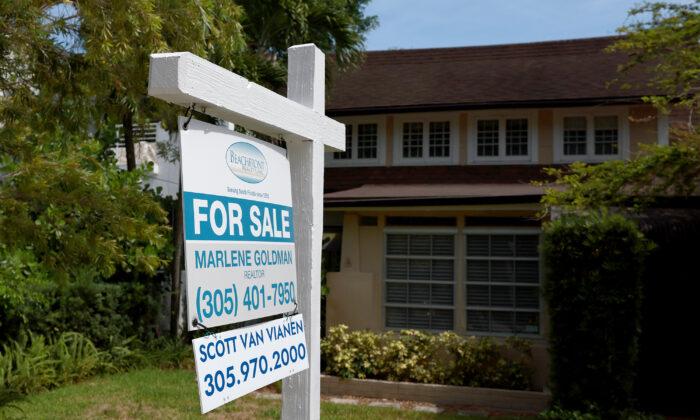Month-over-month regional results were mixed with a slight pickup on average, and the Northeast and Southern states experiencing a rise in sales, while the Midwest and West seeing a decline.
Pending sales in the Northeast rose by 15.4 percent in May—the largest monthly increase among the four major regions.
The West took the worse hit with a 5 percent reduction in future contracts in May, down 19.8 percent from May 2021.
“The largest decline in contract activity was observed in the West region, where homes are the most expensive,” said NAR’s Chief Economist Lawrence Yun.
This is in contrast to last year, when the Northeast, South, and West posted a double-digit decline in pending sales, while sales in the Midwest tumbled by 8.8 percent.
An index level of 100 is equal to the level of contract activity back in 2001.
However, the index’s year-over-year data transactions saw pending sales contracts fall dramatically across the country by 13.6 percent rather the 9.8 percent expected by analysts.
“Despite the small gain in pending sales from the prior month, the housing market is clearly undergoing a transition,” Yun said.
“Contract signings are down sizably from a year ago because of much higher mortgage rates.”
For the average single-family priced home with a 10 percent down payment, the monthly mortgage payment has gone up by about $800 since the beginning 2022, as mortgage rates increased by 2.5 percentage points since January.
“Trying to balance the housing market by choking off demand via higher mortgage rates is damaging to consumers and the economy,” Yun added.
“The better way to balance the market is through increased supply, which also helps the broader economy.”
As the housing market across the country continues to suffer from demand far outpacing supply, local variations in home prices and affordability have become a factor in regional differences regarding pending sales activity.
Interest Rate Seachange
Meanwhile, the real estate industry has lately taken a hit, after the Federal Reserve recently raised interest rates to tame 40 year-high inflation, causing borrowing rates to skyrocket.First-time home buyers were heavily impacted by the rising mortgage rates and there has been a toll on sales of previously owned homes, while the new rates have made purchases unattractive for existing owners to refinance.
Home lending firms are seeing their business evaporate in recent weeks, as mortgage rates hit levels not seen since the Great Recession, as the fallout begins to affect the entire sector.
In June, Wells Fargo announced that earnings from its mortgage-lending business could see a significant drop in the second quarter and started to reassign and lay off employees at its home-lending division.
Its rival, JPMorgan Chase, followed with a similar move at its home lending department.
Real estate brokerages like Compass and Redfin also made public their plans to make double-digit cuts to their workforces at the beginning of June.
Up until recently, the real estate market was experiencing a hiring boom, with the May jobs report showing 1.8 million Americans working in the industry, the most on record.
The report did not include all individuals working in housing-related positions in other industries, such as finance and loans.
The industry appears to have learned from the 2007-2008 housing crisis, with analysts noting that it is better adapted to cyclical changes in the economy this time around.
The 2020 pandemic had instigated a major wave of Americans relocating to other parts of the country and combined with historically low mortgage rates at the time, spurred a large demand for homes and a new refinancing boom.
The two-year housing boom caused home prices to prices to soar and saw home mortgage lenders hitting new records, while existing home owners experienced massive gains in home equity.
Now, the market is heading in the other direction due to the rise in mortgage rates, but a slow down in market growth may weed out excess competition in the home loan market and a chance to replenish new housing stock.
Meanwhile, construction job openings reached a record high in April, as home builders sought more workers to keep up with high demand in the first quarter of the year, according to the U.S. Bureau of Labor Statistics.






Friends Read Free